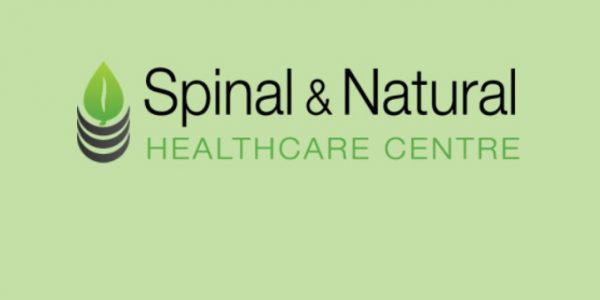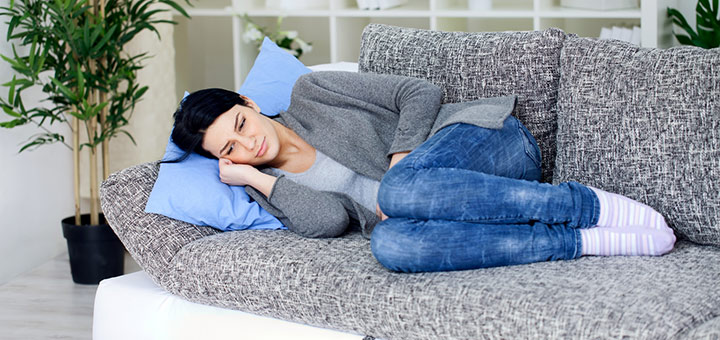There’s an old saying about how the world would be different if men had periods instead of women, but if that was the case, it is certain that the discomfort and disruption of premenstrual syndrome (PMS) would have been solved many years ago! As it is, no one really knows the exact cause of PMS although the likely suspect is a monthly drop in the hormones progesterone and oestrogen which heavily influences mood and anxiety levels.
You probably don’t need me to cite the long list of symptoms that are associated with PMS but they include: depression, cramping and headaches, backache, irritability, mood swings, breast tenderness, changes to the skin and hair, fluid retention and bloating. As many as one in five women will suffer from these symptoms in the one or two weeks prior to her period and for many the problems are a big disruption to daily life.
So what can you do to ease PMS symptoms without reaching for painkilling drugs along with their extensive list of side effects? Firstly, try to avoid PMS by considering your diet and, if necessary, taking supplements. There is increasing evidence that adequate doses of calcium and vitamin D can reduce symptoms. Some studies suggest that vitamin B6 and the supplement red clover can be effective for some women. Although research results are mixed, many women report that taking evening primrose or starflower oils (that contain gamma linolenic acid or GLA) are helpful. It’s important that you talk to your GP as they can advise you on recommended dosages (excessive doses carry their own side effects). I’ve listed below some useful dietary tips below which you can follow along with advice from your GP.
Keeping a diary of what you eat and noting any stressful situations and how you feel about your health during your cycle is a good way to spot patterns and triggers of PMS. You can then take steps to avoid this situations or triggers. Getting in contact with other people who suffer PMS may help you feel less frustrated. The charity the National Association for Premenstrual Syndrome (NAPS) has lots of useful advice, resources and a popular online forum and is doing fantastic work to support further research into PMS: www.pms.org.uk or 0870 777 2177. NAPS can also offer you advice about keeping a menstrual chart.
At my clinic, we’ve helped many patients over the years with the headaches, backache and cramps that so often accompany PMS. There is supporting evidence that a chiropractic adjustment is effective at naturally relieving these symptoms. In a nine month clinical trial (1) involving 25 women with diagnosed PMS, the patients receiving regular chiropractic adjustments showed greater improvement than those receiving a placebo treatment. A different study (2) also showed improvements in mood swings and tension with a self rated improvement in overall symptoms of 44 per cent.
1. Walsh MJ, Polus BI. A randomized, placebo controlled clinical trial on the efficacy of chiropractic therapy on premenstrual syndrome. Journal of Manipulative and Physiological Therapeutics, Nov/Dec 1999: Vol. 22, No. 9, pp582-85.
2. Wittler NA. Chiropractic approach to premenstrual syndrome. Chiropractic: The Journal of Chiropractic Research and Clinical
Investigation.1992; (8): 22-29.
Diet and nutrition
- Talk to your GP or gynaecologist about supplements including calcium, vitamins D and B6. Avoid alcohol and caffeine and limit your sugar intake.
- Low-fat and high fibre diets help to reduce symptoms.
- Drink plenty of water and limit your salt intake (watch out for high salt levels in processed foods).
- Try GLA oils such as evening primrose or starflower capsules.
- Eat smaller meals and have healthy snacks in between meals to keep your blood sugar levels stable.
Exercise and relaxation:
- Stress can make PMS worse. Find an activity that naturally relaxes you, such as yoga, a quiet walk in the fresh air, soothing music or whatever works for you.
- Gentle exercise is a good mood booster and can help ease cramps.
- A heat pack or hot water bottle wrapped in a towel applied to the abdomen or lower back can help distract you from the painful cramps.
- To relieve cramps, lie on your back on a flat, firm surface. Cross your ankles and hug your knees into your chest. Breathe slowly and deeply.
- Talk to your chiropractically trained health practitioner about how he or she can relieve the backache, cramps and headaches associated with PMS.
Stuart Lawrence BSc(Hons) MSc(Chiro) DC
www.spinalcarecentre.co.uk
Consultant Osteomyologist
All information given is intended for general informational purposes only, and should not be construed as medical advice, medical opinion, diagnosis or treatment. If you have or suspect you may have a health problem, you should consult your GP.

